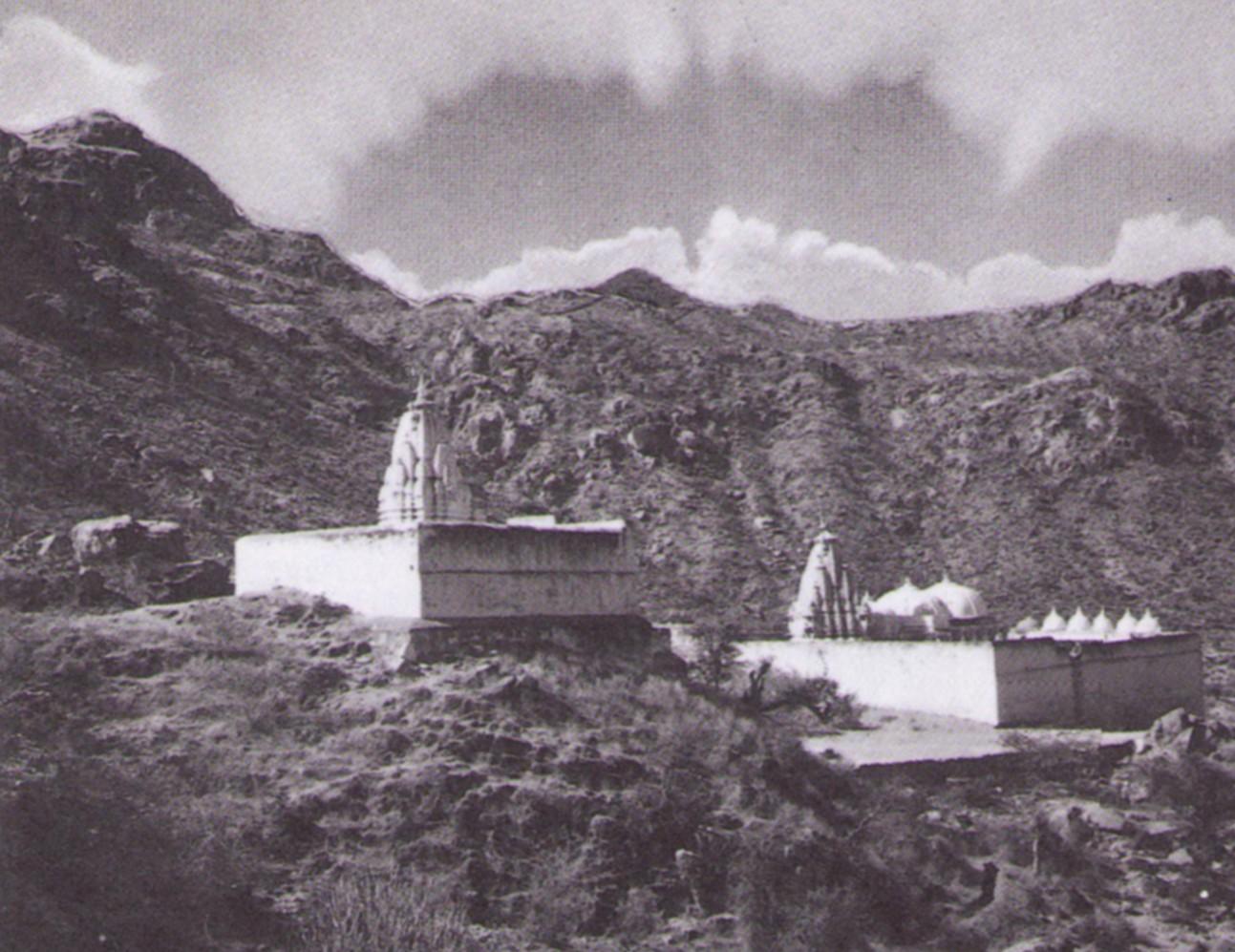Jain Temples at Mirpur
The architecturally most important building near Sirohi is the main temple of a group of four at Mirpur, also known by its former names of Hamipur or Hamiryadh. A bus-ride of about fifteen kilometres to the south-west, then a half-an-hour walk along a track leading towards the Abu mountain range, and the pilgrim will find himself transported into a world where nature reigns supreme. However, the "dense forest inhabited by bears, tigers and other animals of the jungle," mentioned by Jodh Singh Mehta in his book Abu to Udaipur (Delhi, 1970, p. 106), has all but disappeared and is no longer a threatening danger to pilgrims on foot. Centuries ago, Mirpur was the site of a fortified town inhabited mainly by Jaina traders. Little is known about it. Amazingly, four temples have been left standing whereas all the other buildings have vanished. The largest of the four is kept in active worship, thanks to the Seth Kalyanji temple managing body of Sirohi who also saw to it that rooms for pilgrims, a kitchen, and shelters for visiting ascetics were constructed round the remains of a garden-like courtyard.
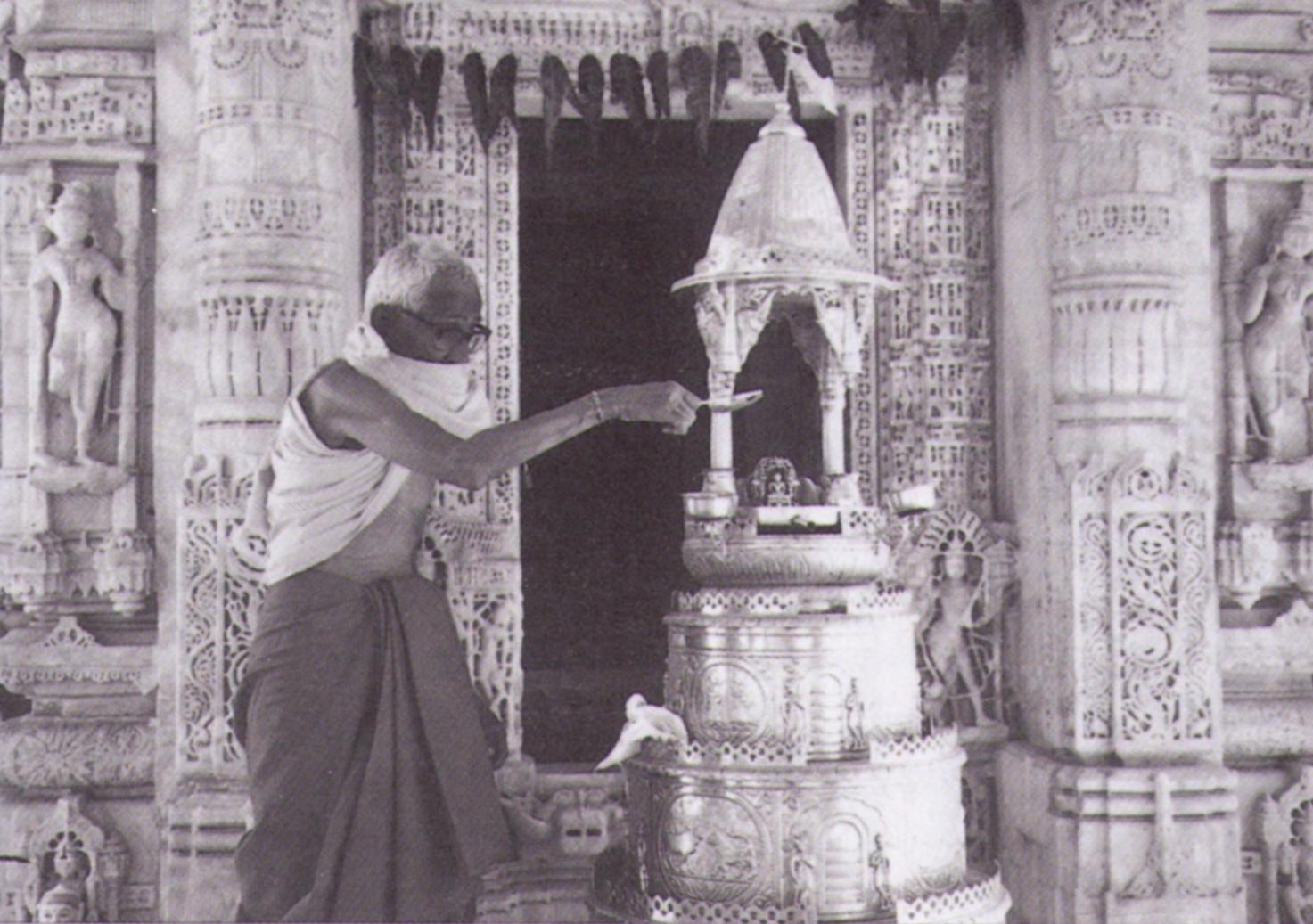 |
The pujari, a Hindu by faith, performs the ceremony during which a miniature Jina, allegorically placed on top of an image representing Mount Meru, is re-anointed. This rite is followed by reconsecratingall the other Jinas in the temple to the accompaniment of music and singing, and sometimes, as on that occasion, also dancing. |
Having taken a public bus from Sirohi and walked the last stretch on foot, we happened to reach the Mirpur temples on the day before the annual ceremony at which all the Jina images are re-anointed. Before we left later in the afternoon, we were asked to come again the next day and take part in the festivities and to taste of the food offered on such occasions. There would be music and dancing, we were told, and Acharya Gunaratna Suri and his monks would be present too. Needless to say, we gladly accepted the invitation. Everything we could wish for would be there: a medieval temple of great beauty, a monk of high standing, a large symbol of Mount Meru wrought in silver together with all the utensils we would be able to see used in their proper way by worshippers of a religion we had come to admire. Music and dance would add a crowning touch to it. In short, the unexpected chance was offered to us to see and hear what M.C. Joshi, in Vol. II of Jaina Art and Architecture, page 260, set forth in the following words (using the past tense): “The medieval Jaina shrine appears to have functioned as a centre of arts and hub of socio-cultural life intended to lead the commoner from falsehood to truth, from lower to higher truth and ultimately to the last goal of the life of a shravaka, that is moksha."
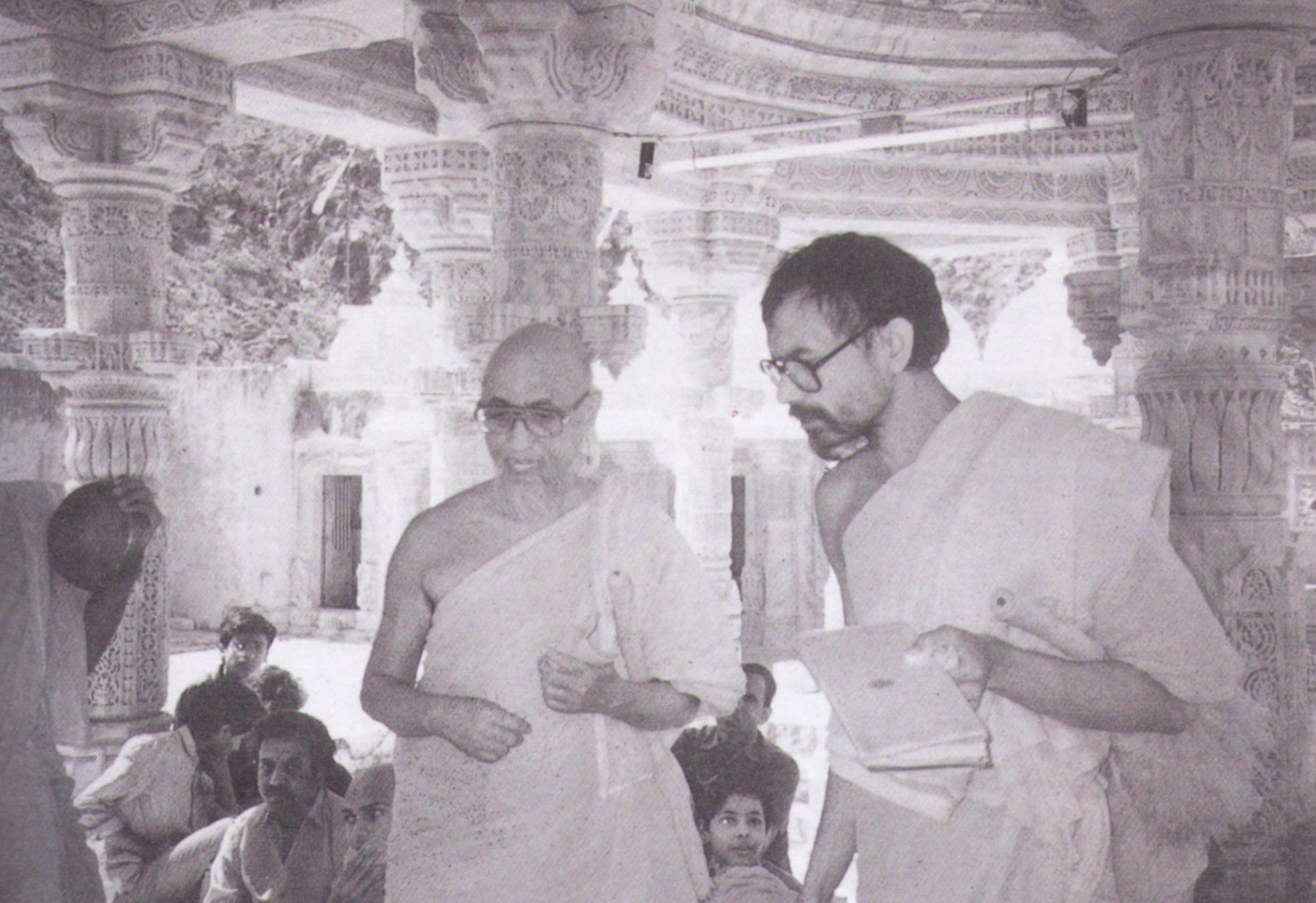 |
Whenever possible an Acharya is invited to preside over an important ceremony; here it is Acharya Gunratna Suri. |
Around the tenth century, Jain architects in the Gujarat and Rajasthan regions of India developed a distinctive architectural plan for Jain temples. This style is characterized by a main temple, consisting of a room called the garbhagriha, where the idol of the main deity is seated. The temple is often built on a platform, with a flight of stairs being the only way to enter. A porch, supported by elaborately carved pillars, covers the entrance to the temple. A prominent roof called the shikhara is situated at the top of the garbhagriha and dominates the surrounding area. Of the numerous temples constructed following this style, the group of four in Mirpur are especially known for their exquisite workmanship and picturesque locations.
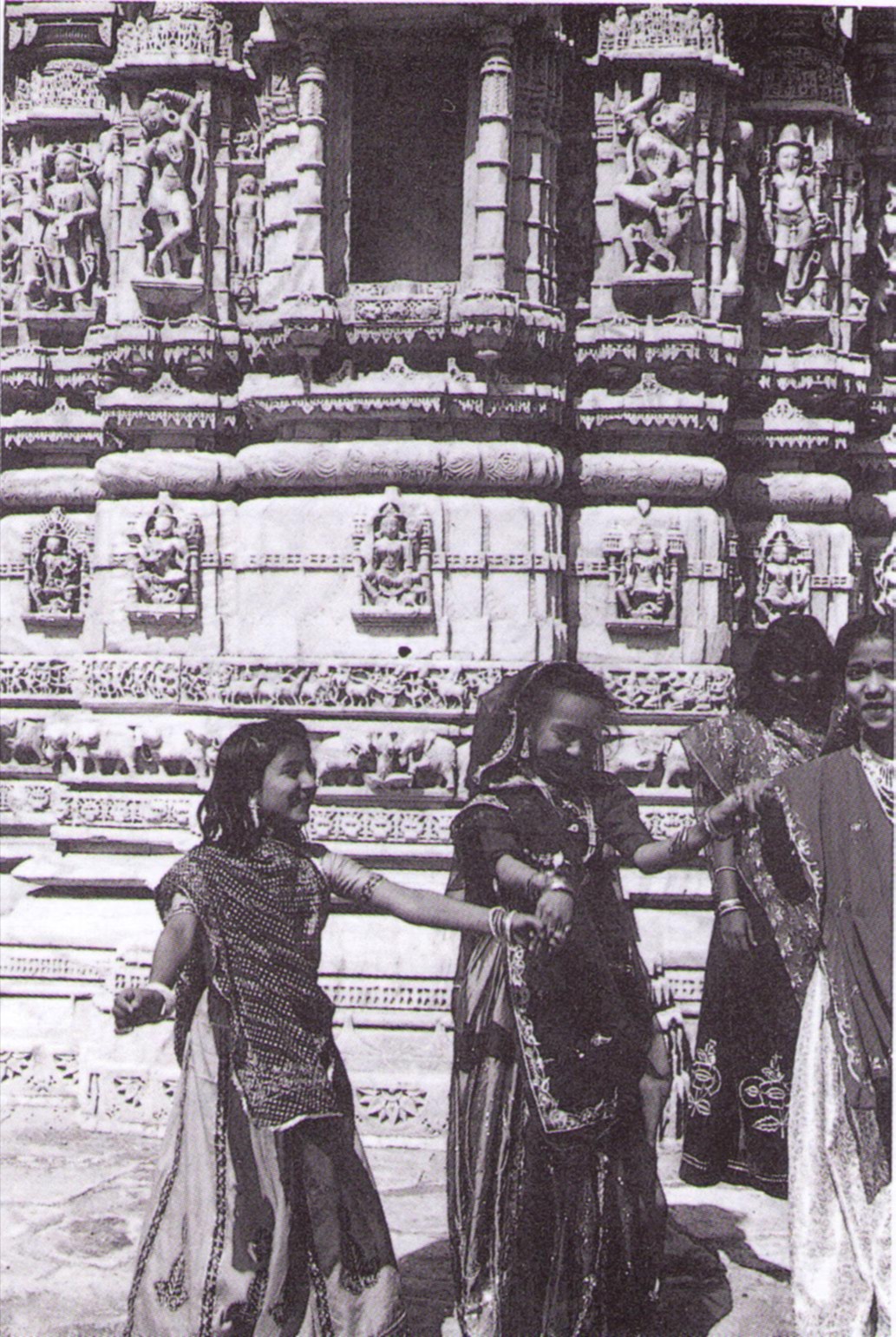 |
Female dancers in front of the temple |
Parshvanath Temple, one of these four temples, is considered to be the oldest marble monument in the state of Rajasthan. There is an inscription stating that this temple was built by King Samprata.The temple is dedicated to Lord Parshvanath, the twenty third Jain Tirthankara. The ancient Jain statue of Lord Parshvanath is seated in Padmasana on a large marble platform. The white colored figure is beautifully modeled with finely carved hands and feet. This sculpture illustrates Parshvanath's triumph over Karnatha, his arch-enemy, in considerable detail. In this sculpture, Dharanendra raises a multitude of cobra hoods to provide shelter for Lord Parshvanath from the relentless storm set into motion by Kamatha.
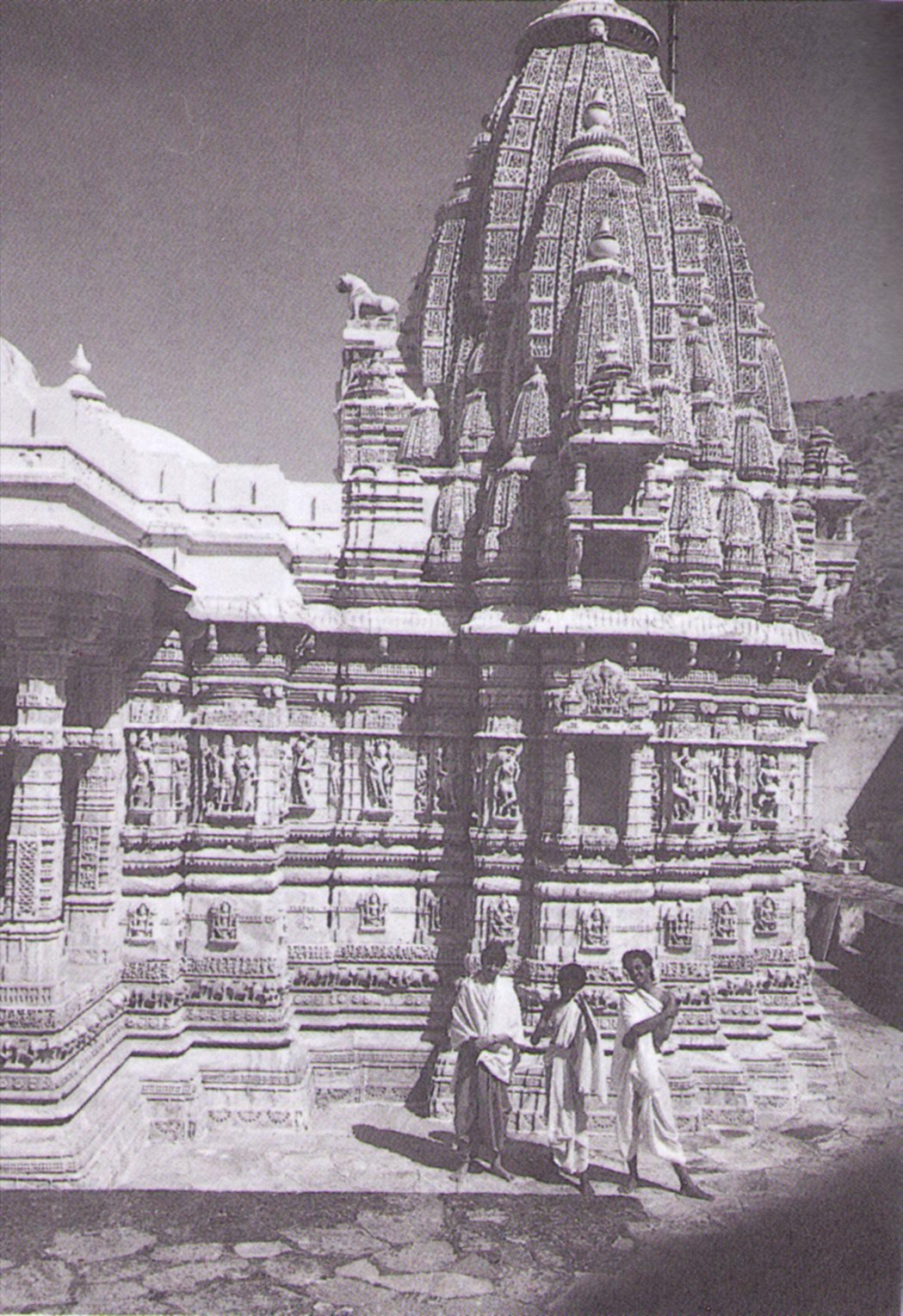 |
| Shikhara (superstructure) above the garbhagriha (sanctum) of the temple building |
This temple is definitely the most architecturally significant of the four. The indescribable artistry of this temple is famous throughout the world and is considered by many to be unmatched. It is said that the artistry displayed on the summit here surpasses even that of the temples of Mt. Abu. The artistic designs on the pillars, gumbaj, domes and the torans clearly set this temple's age to above one thousand years. The carving of elephants in the temple seem to be the best work of art of the times of Pallava. The comers and sides of the plinth of this temple even stand on sculpted elephants. The figures of yaksha, gandharvas, gods and goddesses all around are intricately carved. The ever-peaceful atmosphere of this lonely place is very beautiful. The natural beauty of the scenery during sun-set in front of the temple is spectacular. The ancient art of this temple served as a model for the later Dilwara and Ranakpur temples.
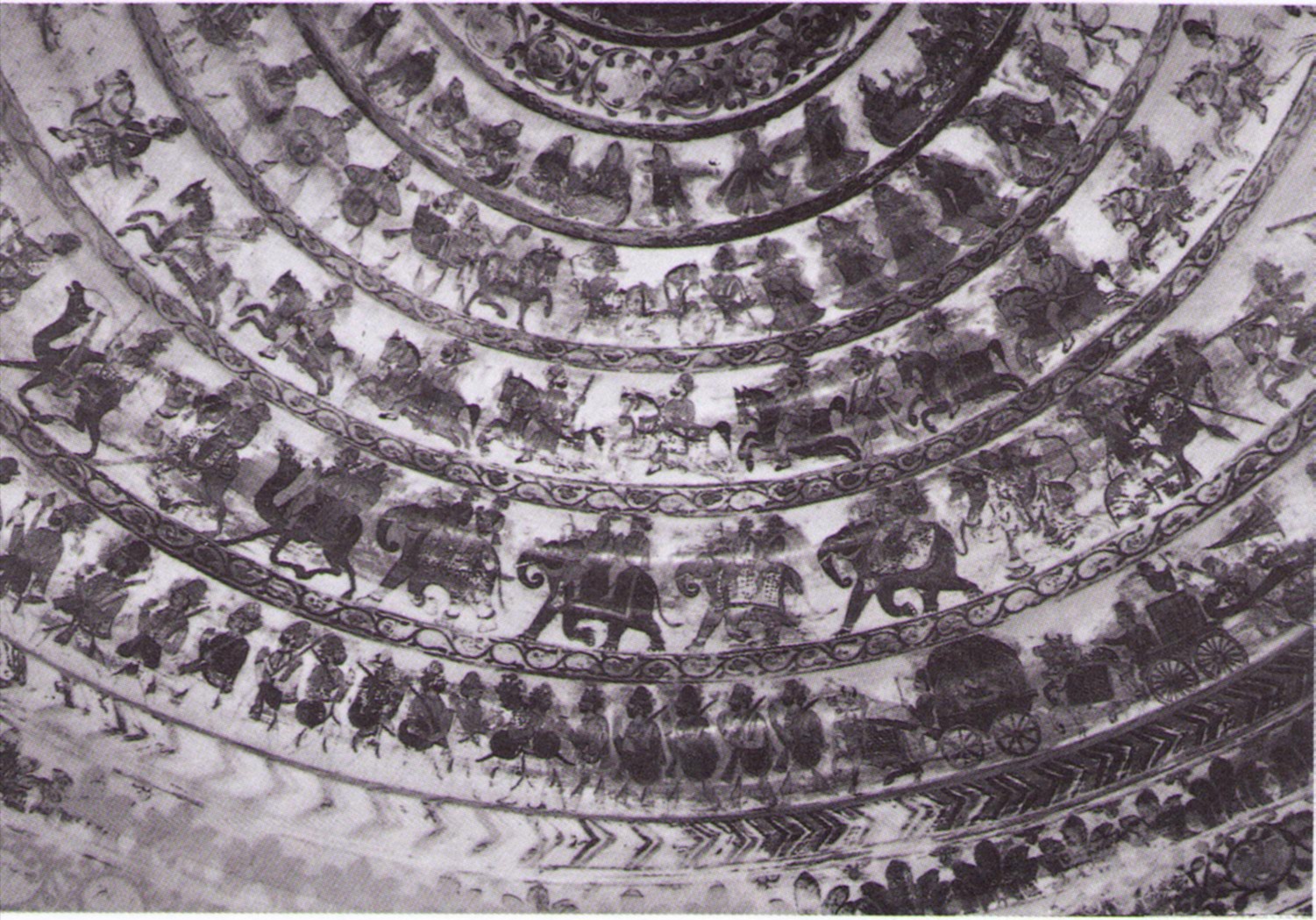 |
Ceiling mural in the smallest of the four Mirpur shrines. It shows motifs rarely seen in Jaina temples. |
